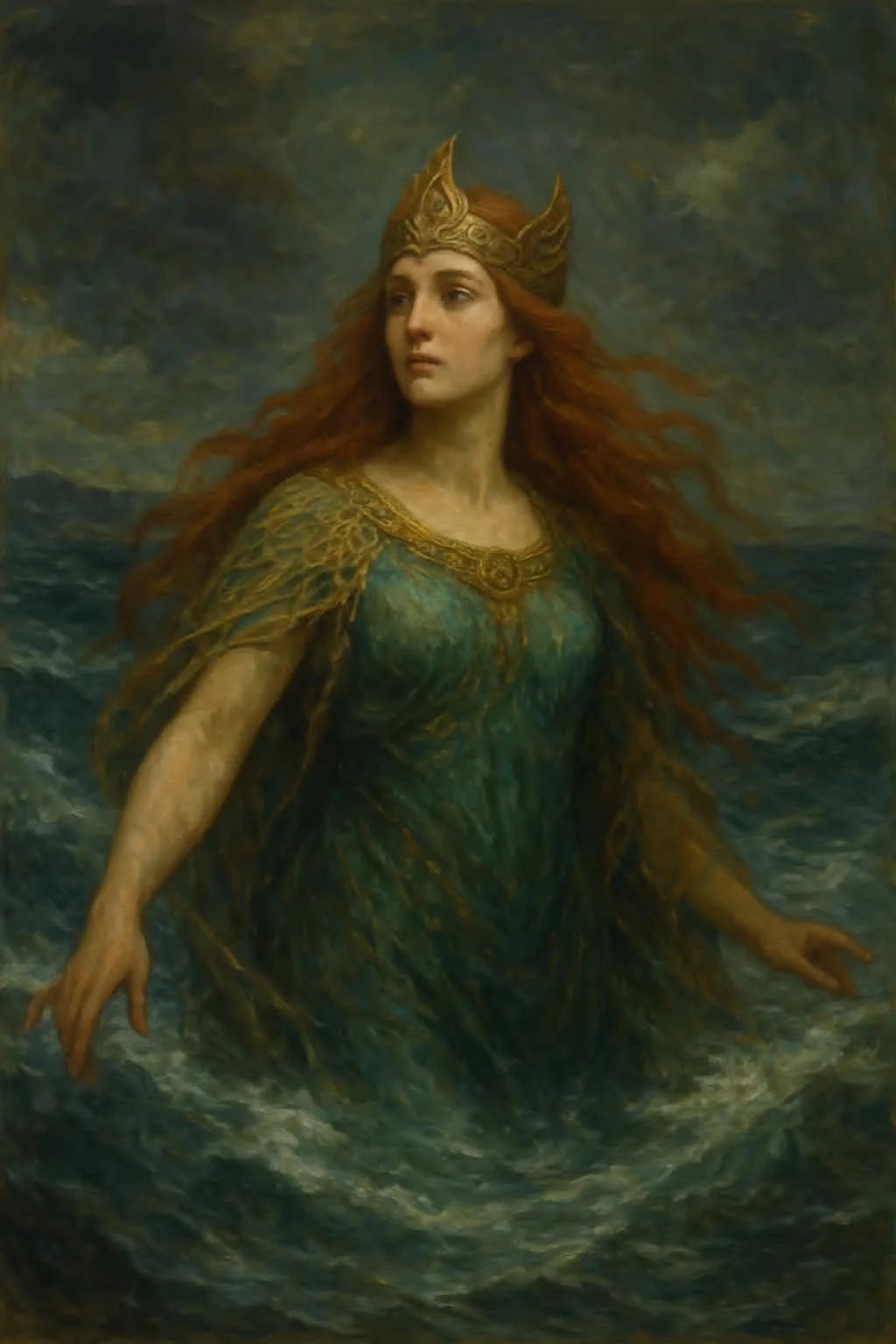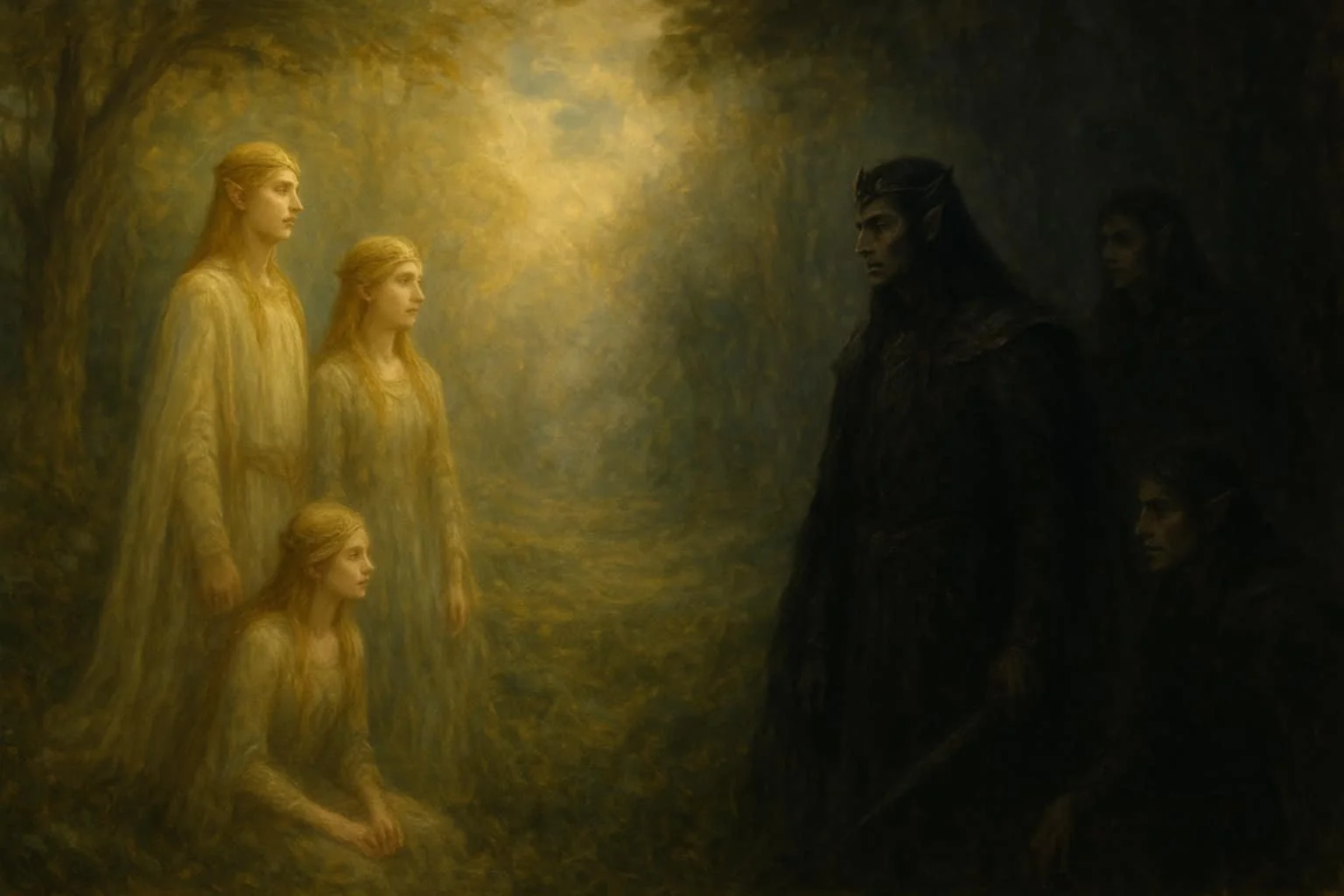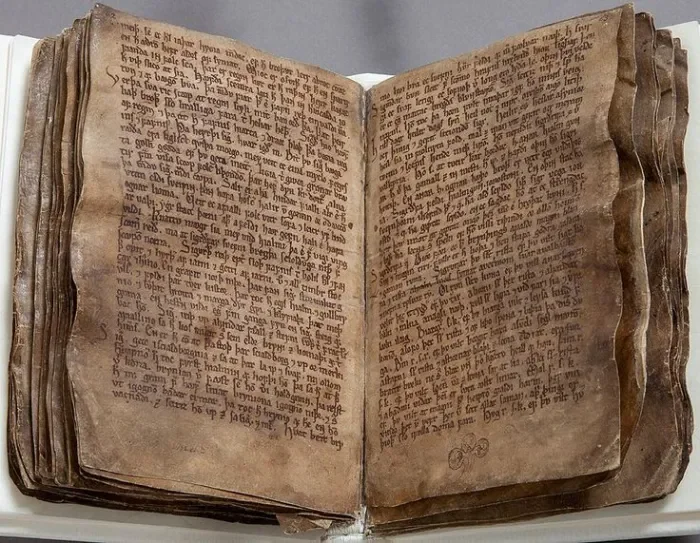
Baldrs draumar -Baldr’s Dreams
Baldrs draumar, “The Dreams of Baldr,” is one of the most haunting poems of the Poetic Edda. In just a few short verses, it tells of Odin’s desperate journey to the realm of the dead to uncover the meaning of his son Baldr’s dark dreams. The seeress he awakens reveals a prophecy of death and doom - the beginning of Ragnarök. Through its quiet, mournful tone, the poem captures the Norse truth that even the gods cannot escape fate, and that knowledge often brings sorrow instead of comfort.

The Great Heathen Army: The Storm of the North
In 865 AD, the seas delivered not a raid but a reckoning. The Great Heathen Army (jarls and war-bands from Denmark, Norway, and Sweden) came to Britain with vengeance, conquest, and settlement in mind. Led in saga and song by the sons of Ragnar Lothbrok (Ívarr hinn Beinlausi, Halfdan, and Ubba) the host shattered kingdoms, captured York, carved the Danelaw, and forced Alfred of Wessex to forge unity from ruin. Shield walls crashed, wedges split ranks, and longships turned rivers into roads. From Repton’s graves to Jórvík’s markets, conquest hardened into culture: Old Norse mingled with Old English; law, language, and place-names took root. The storm met its check at Edington, where Guthrum bent to baptism and a new border was drawn. Yet the legacy endured (coins, courts, and words in the tongue) evidence that the invasion remade the island. This is the story of a tempest that did not just ravage England - it helped create it.

Rígsþula - The Lay of Ríg
Rígsþula (The Lay of Ríg) is one of the most intriguing poems in the Poetic Edda - a tale where the god Heimdall, walking the earth as Ríg, visits humankind to shape the order of society. Through his meetings with three families (the thralls, the freemen, and the nobles) the poem reveals the divine origins of class, culture, and ancestry.
It is not a story of war or prophecy, but of creation through connection - a vision of humanity born from the footsteps of a god.

Rán: The Sea’s Embrace and Terror
Beneath the waves, where silence turns to hunger, dwells Rán - the Norse goddess of the sea’s embrace and terror. With her shining net, she gathers the drowned, holding them in her cold but certain arms.
Rán is not mercy, nor cruelty - she is truth. The sea gives and the sea takes, and every voyage is sailed under her shadow. To the Norse, she was both feared and honoured, the dark mirror of the ocean’s depth and fate’s inevitability.
Her net is more than a weapon — it is wyrd itself, weaving every life and loss into the vast tapestry of the sea. Through her, we remember that every surrender, every ending, and every storm is part of a larger design.
To face Rán is to face the deep: to accept what we cannot control, to live fiercely even knowing the tide will one day claim us. 🌊

The Lay of Svipdag (In story form)
The tale of Svipdag is one of the hidden gems of Norse mythology — a story not of gods at war, but of fate, love, and the enduring bond between mother and son. Sent on an impossible quest by his cruel stepmother, Svipdag calls upon the spirit of his dead mother, Gróa, who rises from her grave to arm him with protective spells. Guided by her magic, he journeys through perils until at last he reaches the blazing fortress of Menglöð, the maiden destined to be his bride. There, through riddles and trials, his fate is revealed, and the long-awaited union of two lovers is fulfilled.

The Shimmering Bridge Between Worlds: The Bifröst
In Norse mythology, the Bifröst was no simple rainbow. It was a trembling, fiery bridge of air, water, and flame — a cosmic pathway linking the world of humans to the gods of Asgard. Guarded by the ever-watchful Heimdall and destined to collapse at Ragnarök, the Bifröst symbolized both connection and fragility. More than myth, it reminds us today of the delicate bridges we walk in our own lives — bonds of trust, family, and community that shimmer with beauty but demand our care.

Ragnar Lothbrok: The Viking Who Became Legend
Ragnar Lothbrok, the Viking who became legend, straddles the line between history and myth. Feared raider, cunning strategist, lover of shieldmaidens, and the man who laughed in a pit of serpents — Ragnar’s story is as much saga as it is legacy. His sons carried his name across Europe, but it is Ragnar’s fearless defiance of fate that keeps his legend alive today. Was he a real man, or a myth made flesh?

Alfheim in Norse Mythology: Light Elves, Freyr, and the Realm of Magic
Alfheim, the radiant realm of the light elves in Norse mythology, is a place of beauty, harmony, and inspiration. Rarely described in detail in the surviving texts, Alfheim remains one of the most mysterious of the Nine Realms—home to luminous elves, linked to the fertility god Freyr, and balanced against the shadowy world of the dark elves. Discover the light, shadow, and lessons hidden in this enchanted realm of Norse cosmology.

Muspelheim: The Realm of Fire, Destruction, and Renewal
Muspelheim, the blazing realm of fire in Norse mythology, is more than a mythic world—it is the force of creation and destruction itself. From Surtr and his fiery host to the legendary “sons of Muspell,” this realm embodies both the birth of the cosmos and its destined end at Ragnarök. To the Vikings, Muspelheim wasn’t just a story; it was reflected in the volcanic eruptions, wildfires, and raw extremes of their world. Discover how this realm of flame symbolizes balance, transformation, and the eternal cycles of life, death, and renewal.

The Great Lacuna - The missing texts of the Poetic Edda
The Codex Regius is the single most important manuscript of Norse mythology—but it carries a haunting mystery at its core. Eight leaves are missing from its heroic section, a gap known as the Great Lacuna. This loss strikes at the very heart of the Sigurðr–Brynhildr tragedy, erasing the poetic account of love, betrayal, and death that once stood alongside the greatest epics of world literature. What remains are fragments and echoes: prose sagas, later German adaptations, and the faint outlines of poems now gone. This blog explores what was lost, what scholars believe the lacuna once contained, and why it matters so deeply for our understanding of the medieval Norse imagination.

The Codex Regius - Poetic Edda
The Codex Regius is more than a medieval manuscript—it is the beating heart of Norse mythology. Written in Iceland around 1270, this fragile book preserves the Poetic Edda, the only complete collection of ancient mythological and heroic poems that tell of Odin’s wisdom, Thor’s hammer, Sigurd the dragon-slayer, and the doom of Ragnarök. Lost for centuries and rediscovered in 1643, the Codex travelled to Denmark and was only returned to Iceland in 1971, where it is now celebrated as a national treasure. Without it, much of what we know about the Viking Age worldview and early Icelandic heritage would have vanished forever.

Jötunheim: Realm of the Giants in Norse Mythology
In the vast cosmology of Norse mythology, Jotunheimr stands as the untamed frontier—a realm of primal forces, jagged mountains, icy rivers, and endless forests shrouded in shadow. Unlike the ordered splendour of Asgard or the human realm of Midgard, Jotunheimr is wild and unpredictable, embodying the raw power of nature itself. Home to the mighty Jötnar, the giants who are both adversaries and kin to the gods, this land represents chaos in eternal tension with divine order.
Exploring Jotunheimr is to journey into the heart of Norse myth, where legendary tales unfold—from Thor’s battles with frost giants to Loki’s schemes and Freyr’s fateful love for the giantess Gerðr. The realm is not merely a backdrop to these stories, but a living symbol of wilderness, otherness, and the eternal balance between chaos and cosmos.

What is The Hávamál?
The Hávamál, “Sayings of the High One,” is one of the most remarkable works of Norse mythology. Preserved in the Poetic Edda, it is a collection of wisdom, myth, and magic attributed to Odin, the god of knowledge and poetry. At once a handbook of everyday conduct and a meditation on the pursuit of wisdom, the Hávamál bridges Viking Age society with the spiritual world of the North. Rooted in oral tradition and saved by the medieval Codex Regius manuscript, it remains a timeless voice of Norse belief.

The Sagas and Historical Texts of Norse Tradition
The sagas and historical texts of medieval Scandinavia preserve a vivid picture of Viking Age and medieval life. From family feuds in Iceland to the reigns of Norwegian kings, from saints’ lives to chronicles like Íslendingabók and Gesta Danorum, these works reveal how Norse people remembered their past. Blending history, legend, and literature, they stand as some of the most important sources for understanding the culture, values, and identity of medieval Iceland and beyond.

Sagas & Historical Texts
The sagas and historical texts of medieval Scandinavia preserve the world of kings, warriors, settlers, and saints. From the dramatic family feuds of Iceland’s settlers to the sweeping narratives of Norwegian rulers, these works capture the lives and values of the Viking Age. Alongside the sagas are chronicles such as Íslendingabók, Landnámabók, and Saxo’s Gesta Danorum, which blend memory, history, and legend into enduring records of the Norse past.

The Prose Edda: Preserving the Myths and Poetry of Medieval Iceland
The Prose Edda is far more than just a medieval curiosity — it is a cultural bridge. Snorri Sturluson’s compilation preserves voices that might otherwise have been silenced by the tides of Christianity and political change. It is simultaneously a mythological encyclopedia, a poetic handbook, and a cultural time capsule of 13th-century Iceland.

Yule - The Norse Midwinter Festival of Fire and Renewal
Yule, the great midwinter festival of the Norse and Germanic peoples, is far more than a holiday of feasting and fire. Rooted in ancient traditions, it marked the rebirth of the sun and the turning of the year, when darkness began to give way to light. Celebrated with sacrifice, merriment, and sacred rituals, Yule honored the gods, ancestors, and the vital cycle of death and renewal. From the burning of the Yule log to the honoring of Odin in his guise as the Yule Father, these customs carried deep spiritual meaning. Today, Yule lives on in modern pagan practice and even in many Christmas traditions, reminding us of humanity’s enduring reverence for light in the heart of winter.

Jormungandr: The World Serpent of Norse Myth
Jormungandr, the great Midgard Serpent, coils through the heart of Norse mythology as both destroyer and symbol of eternal cycles. Cast into the ocean by Odin, the child of Loki and Angrboda grew so vast he encircled the world, biting his own tail. His presence embodies the ouroboros—creation and destruction intertwined, beginnings and endings without end. Feared for the venom dripping from his fangs and destined to face Thor in the last battle of Ragnarök, Jormungandr is more than a monster. He is chaos, transformation, and inevitability. His myth reminds us that even in the terror of endings, renewal awaits, and from destruction, new worlds rise.

Yggdrasil: The World Tree of Norse Mythology
Yggdrasil, the great World Tree of Norse mythology, stands at the center of the cosmos, linking gods, giants, humans, and the dead across the Nine Realms. Its vast branches reach the heavens while its roots drink from the wells of wisdom, fate, and creation. From Odin’s sacrifice for the runes to its trembling at Ragnarök, Yggdrasil embodies life, death, and rebirth in an endless cycle. For modern pagans and seekers, it remains a symbol of interconnectedness, resilience, and the eternal weave of wyrd.


